Toyota has sold something like 44 million Corollas so far – over the course of about 40 years. To put that number in context, Volkswagen sold only half as many Beetles – over twice that span of time.
The Beetle – not the new one recently cancelled but the much-beloved original model with the engine in the back and cooled by air, not water – was made from the 1930s through the 2000 model year, when the last one was hecho’d in Mexico.
Toyota has only been making Corollas since 1966 – and is still making them.
Because unlike VW, Toyota didn’t fix what wasn’t broken.
The Corolla is the world’s best-selling compact sedan as well as the best-selling car, ever.
Probably because it’s the comfort food of cars. It does everything a car should do, better than most – and for less money.
The $19,600 L trim comes standard with sensible features such as 15 inch steel wheels – tougher than aluminum and much cheaper to replace than aluminum, if you ever do manage to bend one. A not-turbocharged 1.8 liter engine that isn’t direct-injected. Manual-control AC . . . and a number of surprising features such as adaptive cruise control, in-car WiFi , a 7-inch touchscreen and a seven-speaker stereo with both AppleCarPlay and Android Auto.
If you prefer automatic climate control AC – and want larger (and aluminum) wheels, they’re both available for just slightly more – $20,050 – if you buy the next-up LE trim. This one also comes with an additional USB charge port and upgraded upholstery.
Toyota also offers a larger 2.0 liter engine – and with an available manual transmission.
The SE comes with both – for $22,750.
The almost-top-of-the-line XLE comes with a digital/configurable main gauge cluster plus a larger 8-inch touchscreen, heated seats and SoftTex (simulated leather) seats.
It stickers for $24,050.
A top-of-the-line XSE – which comes with the XLE’s luxury upgrades plus the SE’s more potent 2.0 liter engine and a CVT automatic transmission – lists for $25,550.
Pretty much everything you need – and want – for not everything you’ve got.
What’s New
The 2020 Corolla is new – and expanded.
In addition to the traditional sedan you can also buy a Corolla hatchback – and a hybrid.
The hatchback is reviewed here. I’ll have a review of the hybrid later this year.
No wagon, though. Well, not here.
What’s Good
Conservative – in the mechanical (rather than political) sense.
Comforting – like mac and cheese.
One of the few new cars that can be called an “investment” without abusing the language.
What’s Not So Good
Manual transmission isn’t standard.
Manual transmission isn’t available with the standard engine
Mediocre seat warmers; one-size-fits-all cupholders.
The 2020 Corolla is available with two engines – and two transmissions – but what you can get with what depends on which trim you buy.
The base L, LE and XLE trims come standard with a 1.8 liter four cylinder engine – without a turbo – paired only with a continuously variable (CVT) automatic. This engine makes 139 horsepower and delivers 30 MPG in city driving and 38 on the highway.
Interestingly, this is almost exactly the same mileage as a 1995 Corolla delivered. The 2020 Corolla would probably be capable of 45 MPG or better – if it were lighter. But it’s several hundred pounds heavier. Which it must be, in order to comply with today’s federal crashworthiness standards.
The ’95 Corolla was lighter – and not as crashworthy – but that didn’t mean it was unsafe – i.e., more prone to crash.
It just didn’t protect you as well if you did crash.
If you want more horsepower, to leverage the additional weight – and a manual transmission – Toyota offers a 2.0 liter engine (also without a turbo). This engine makes 169 horsepower and can be paired with a six-speed manual instead of the CVT.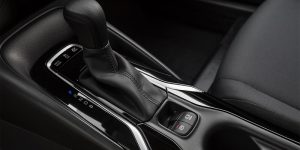
But only in the SE and XSE trims.
Interestingly, the more powerful 2.0-equipped Corolla uses a bit less gas – at least, when you pair it with the CVT automatic, which is optional with this engine.
The 2.0/CVT combo rates 31 city, 40 on the highway.
Probably because this engine is direct-injected. Direct injection does what it sounds like; fuel is sprayed directly into the engine’s cylinders under more than 2,000 pounds of pressure vs. 30-35 pounds or so, in a port fuel injected engine. This atomizes the fuel more finely and allows extreme fine-tuning of the fuel spray.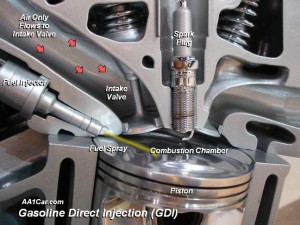
This results in a mileage gain of about 3-5 percent vs. the same engine without DI. Which is why DI is rapidly replacing port-fuel-injection (PFI) in new cars generally. It’s a way for the car manufacturers to up the MPGs – and the power – even though it costs you more money to buy the car.
Also interestingly – in the other direction: If you go with the available six-speed manual transmission, the same engine only manages 29 city, 36 highway.
Even with DI.
On the window sticker, at least.
Out in the real world, a driver who knows how to drive might do better-than-advertised with the manual. But drivers vary. Automatics can be programmed for uniformity – to shift in such a manner that the car achieves the highest-possible MPGs on the government’s test loop – which determines the MG numbers that the car manufacturer can advertise on the window sticker as well as the numbers used to determine Corporate Average Fuel Economy (CAFE) numbers. These numbers are the basis for determining whether a car company gets socked with “gas guzzler” fines for not meeting the mandatory minimums (currently 35.5 MPG).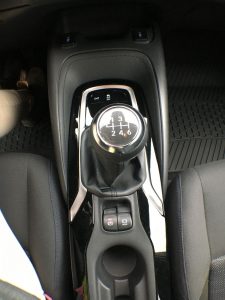
These fines are, of course, passed on to the buyer – in the form of a higher sticker price – which makes the car less appealing to buy.
Which creates an artificial (government) incentive to build more cars with predictable, programmable automatics and fewer with variable manuals.
Or none at all.
Speaking of none at all.
Neither the Corolla’s standard 1.8 liter engine or its optional 2.0 engine are under pressure – turbocharged.
And so, in a way, neither are you.
No worries about a dead turbo. Ever.
This is no small thing given how much it can cost to replace a dead turbo – and no small risk given the heat and pressure turbos create and subject the engine to.
There’s a reason why turbocharged engines used to be found rarely – and almost exclusively in high-performance cars, where the turbo’s longevity and cost downsides were made up for by the power upsides.
The reason why turbos have become common in cars generally s because turbos are being used to make up for the power lost by making engines smaller.
In order to reduce the quantity of gas they burn.
In theory. On government fuel economy tests.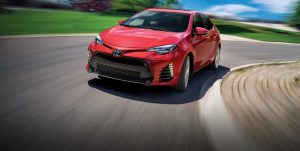
In the real world, little engines with turbos often use at least as much – and sometimes more – fuel than a not-turbo’d engine that’s larger and makes about the same power without the turbo, because the little engine is almost constantly “on-boost” . . . to make up for the fact that it’s smaller and less powerful off-boost.
If you doubt this, test-drive a new Corolla competitor with a turbo – and see whether you get the mileage it advertises.
With the Corolla, you’ll get what’s advertised – as well as what’s not.
Nothing about the Corolla is exciting. This is its virtue.
No surprises. Now – or 175,000 miles from now. These cars just run. Maybe not fast. But damned near forever.
It’s not uncommon to see 25-year-old Corollas still in use as daily drivers.
One rarely sees classic Beetles on the road anymore – unless they’re headed to a car show.
Part of this, of course, is due to the fact that the classic Beetle was a primitive car – eveb when it was new back in the ’30s – that never evolved into a modern car while the Corolla has always been a modern car – with heat, for instance.
And more than enough power enough to keep up with modern traffic.
The standard and optional not-turbo’d engines make less torque and higher up the tach (126 ft.-lbs. at 3,900 RPM for the 1.8 liter engine; 151 ft.-lbs. at 4,400 for the 2.0 engine) than some of the turbo boosted competition in the segment, so it takes a moment for the Corolla’s sails to fill and the speed to increase.
But it’s not a slow car.
Mid-nines for the 1.8 liter-equipped version; high-eights if you choose the stronger 2.0 liter engine. This is about 1 second off the pace for cars in this general class – a difference without a distinction . . . if you’re paying attention.
The light goes green; and people aren’t moving. It takes them a second or so to react to the green. By which time, you’re already moving . . . if you’ve been paying attention.
Unlike a classic Beetle, you can drive a Corolla 75 MPH – the pace of today’s highway traffic – all day long, without the engine running at 90 percent of its capability. You have another 40 MPH of margin – if you ever need the extra.
It’s not as twitchy as rivals that make the mistake of trying to be too sporty. When everything is trying to be sporty, cars with an easier-going nature stand out like . . . comfortable shoes in a high heel store.
it takes road irregularities with equanimity. The brakes aren’t grabby and – manual models – the clutch take-up isn’t abrupt. The grip threshold is lower than a Corvette’s. But this makes it more fun to drive in a way than the Corvette, which has limits so high that they’re unapproachable. You can’t test the car – or yourself.
Besides, this isn’t meant to be a hot rod. Or a gimmick-mobile.
It has a good ol’ grab handle gear selector. Not a button or a mouse. 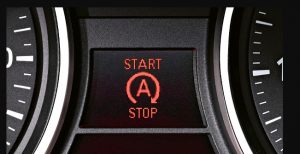
One thing the he Corolla doesn’t have is ASS – automated stop start. The engine runs – until you turn it off. This is another small thing that’s a big thing – if you’ve driven other new cars lately.
Almost all of which do have ASS. And so the engine is constantly shutting off – and turning back on. The small irritation works on you over time until it becomes a big irritation – like a zit on your back you can’t reach that just won’t pop.
Nominally, the Corolla is a compact-sized sedan. But the definition of “compact” has morphed a bit.
Back in ’95, a Corolla was definitely a compact – 172 inches long; the new one is 182.3 inches – almost a foot longer overall.
By the standards of 1995, the 2020 Corolla would almost qualify as a mid-sized sedan.
And by today’s standards, it almost does, too – as far as inside room. It has 42 inches of legroom up front and 34.8 inches for the backseat occupants – comparable to larger-on-the-outside sedans like the current Camry, which is a foot longer than the Corolla (192.7 inches) but only slightly more backseat legroom.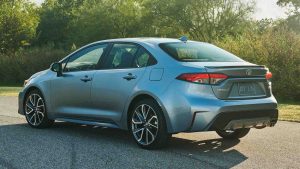
Styling remains conservative – something that is the same as it was back in ’95. This helps the Corolla wear well over time – which helps it retain its perennial appeal.
Which helps it retain its value.
The center console storage cubby is a little small – but this is compensated for by the large storage areas built into the door panel lowers. The one thing that could be improved is the size – and lack of adjustability of the cupholders just behind the gear selector on the center console. They fit small-medium drinks but larger ones go homeless.
As noted earlier, you can get the Corolla with many of the latest things – including power-adjustable sport seats, a larger LCD touchscreen, leather trim, adaptive headlights and ambient interior lighting.
But it comes standard with all the needful things – such as AC, power windows, locks and a six-speaker stereo with Bluetooth connectivity.
You don’t have to spend extra to get a well-equipped Corolla.
And you’ll get something that very few other cars can offer – at any price: The lowest depreciation rate of any car in the class. Unlike almost all new cars, a new Corolla won’t be worth half what you paid for it five years from now.
Well, unless you wreck it.
The Bottom Line
Never fix what’s not broken.
Toyota hasn’t.
. . .
Got a question about cars, Libertarian politics – or anything else? Click on the “ask Eric” link and send ’em in!
If you like what you’ve found here please consider supporting EPautos.
We depend on you to keep the wheels turning!
Our donate button is here.
If you prefer not to use PayPal, our mailing address is:
EPautos
721 Hummingbird Lane SE
Copper Hill, VA 24079
PS: Get an EPautos magnet or sticker or coaster in return for a $20 or more one-time donation or a $10 or more monthly recurring donation. (Please be sure to tell us you want a magnet or sticker or coaster – and also, provide an address, so we know where to mail the thing!)
My latest eBook is also available for your favorite price – free! Click here. If that fails, email me at [email protected] and I will send you a copy directly!




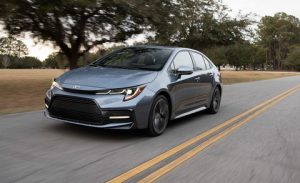
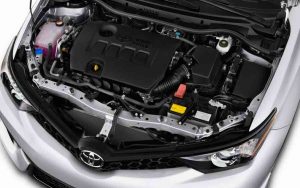
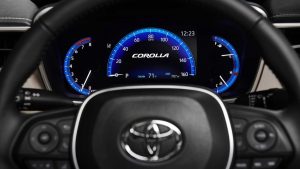
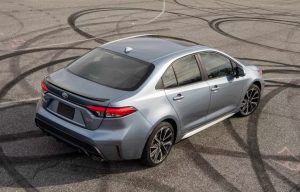


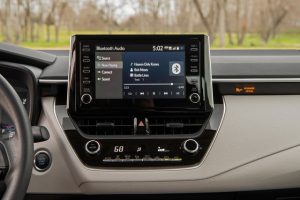








Eric; just one small correction.
While it is true Toyota has sold more cars CALLED “Corolla”,over the years, the Corolla has been at least 7-8 very different cars, where as VW’s wonderful Beetle was inarguably the very same car (with continuous improvements) over it’s lifespan. Toyota has not come close to VW’s record of any same car model between re-engineering cycles.
Eric,
Are you sure that the 2020 Corolla is new and not a refresh of the existing version? The reason I ask is that a guy I used to work with got a Corolla 3-4 years ago, and it looks like the one in the pictures. IIRC, the bottom trim was coming with a 4 speed automatic and other trims with the CVT, but his car looks like the one in the above photo.
Quick question Eric,
On the 2020 Toyota Corolla hatch article ( https://www.ericpetersautos.com/2019/04/13/2020-toyota-corolla/ ) you said it has 18 cubic feet of storage space behind the seats up and 23.2 with them down. Is that a misprint? It only gains 5 cubic feet with the seats down?
The Golf/GTi has 22.8 & 52.7 cubic feet respectively ( https://www.ericpetersautos.com/2019/03/01/2019-vw-gti/ ). I understand it’s not going to be as spacious as the Golf due to it’s shape but I would think there would be more than 23.2 Thanks.
Dunno if the CVT in the Corolla has the same issue as the Lexus RX 350 we bought recently with an 8 speed automatic – ultra tall gearing coupled with a programmed bias toward getting the car into the 1,000 to 1,500 RPM range. The engine runs rough in that range if you apply much throttle, until you it hard enough to downshift. It feels like it is lugging, possibly shortening the engine life. You gotta get past 60 MPH before it settles into smooth RPMs above 1,500.
The Eco mode does this a lot, the Normal mode a bit less. The Sport mode is best, but it won’t stay in that mode long unless you’re running the car fast. It keeps defaulting back to Normal.
I get trying to maximize fuel economy, but there ought to be a transmission mode option that avoids low RPMs with moderate throttle. An intermittently rough running engine on their luxury brand – who thought that was a selling point?
Jim, unfortunately, this is the new normal for auto’s to try and meet CAFE regs. GM trucks started doing this in 2007, really bad performance. I was so mad, I spent $42K on their top of the line 6.2L engine and I hated driving it. They have since made drivability better because they got better mpg with DI engines and 8 & 10 sp trans. I didn’t know others like Lexus had to resort to this ‘detuning’ as well, but I guess so now. Sorry. CAFE sucks.
Their are some auto’s that allow the ‘sport’ mode to stay on, which helps a lot. My 300S 5.7 is one of them, that when I pushed it on the test drive, I bought it. But I’m pretty sure Eric said that FCA pays fines for such? Good, then they will get my money.
Enjoyed the review Eric. I just wanted to add a couple things for folks (like myself) who are considering this car. The 2.0 liter engine is also port-injected in addition to being direct-injected. That is significant in my opinion and kudos to Toyota for that. And the 6-speed manual has rev-matching downshifts.
I would opt for the 6-speed manual all-day everyday but a lot folks say this is their favorite CVT they’ve ever driven. It has a physical 1st gear so there is no lag when accelerating from a stop. It also has a sport mode that allows the use of the paddle shifters. I’ve not driven it but I’ve seen video and it does actually shift quite quick with the paddle shifters.
p.s. All this is from my research on the Hatch but I’m assuming it all pertains to the sedan version as well.
p.s.s. Would love it if they gave us the wagon version. I’ve seen pics of that car and honestly, in my opinion, it’s the best looking Corolla in the lineup in addition to all that utility. Shame.
Thanks, Chris!
I’m not a fan of CVTs, either . . . usually. But (as you note) the Corolla’s works seamlessly. If you didn’t know it was a CVT you’d assume it was a regular automatic. I’d have no hesitation about buying this car so equipped.
I have one with CVT. I’d rather it not be for all the reasons everybody knows, but it has performed well. I live in hilly terrain and pull out of a steep driveway daily, and it seems fine. I’m at 74,000 miles, and so far so good. What is the service interval for the CVT juice?
It’s still just a glorified rubber band.
It seems like an okay car. Besides the catfish look, I can’t stand that I-pad on the dash sticking out, blocking forward visibility that permeates most low end cars. Which of the two large mega corporations doing car designs came up with this idea to sell to auto makers? It’s awful.
Agree Swamp but unfortunately that is the way everything is going, even a lot of higher end cars. It’s no insignificant expense for manufacturers to buy a mold to create a custom panel for infotainment. It’s far more economical for them to go this route. I get it but it doesn’t mean we have to like it. It’s not going anywhere though unfortunately.
Manufacturers don’t buy a mold for anything. They have a company that makes plastic parts and give them the specs.
The companies that make plastic parts make all sorts of parts including beverage bottles, food containers and just about anything else that can be made on a fully automated line.
I’ve been in a plastic manufacturing plant that made dashpads for GM and bottles for Coca Cola…..among other things.
True Eight. But the manufacturers still usually buy the mold/tool as far as I know and said tool is owned by the manufacturer. I interviewed in a tool/mold shop once and they had contracts with several German makes for making molds for various plastic pieces. The German makes owned the tool even though they prob. never laid hands on it.
We have tools were I work as well where we made the tool, store the tool, use the tool, etc. But we don’t own the tool nor did we pay to have the tool made.
“Why isn’t corolla investing in EVVVVVVVVVVVVVs!!!!!!!111!!!”
-Angry Environmentalist/Accredited Jour-NO-List
Eric, isn’t it strange Uncle Scam and brethren didn’t take down Toyota and Honda like they did VW? And how they both are not dumping money into EV’s yet like Ford did? (and Ford’s newly unemployed president and $1.8 billion yearly loss). Toyota and Honda sell ultra reliable cars with good mileage. Maybe I am jumping the gun and Uncle Scam is planning their attack on the Japs as we speak. One way to drop 40lbs off your Corolla is to cut off the muffler and rear exhaust and do straight pipe!
I’m guessing cause our uncle has gotten into bed with our last 2 car companies to change the game. If/when our last 2 have EV’s then the gauntlet gets let lose on ICE cars. Hope I’m wrong.
My cousin had a wreck recently. A woman with her children pulled out in front of him on a 60 mph road and amazingly, nobody was significantly injured but he totaled his FJ that looked like new and he intended to keep till he died.
No doubt it would have made it since it had really low mileage. He bought a RAV 4 to replace it. That was depressing since there are no nice looking cars being made and the RAV 4 is no exception. He likes it so far but it’s only a week old or so.
The downside is it looks like what I’ve come to expect, ugly…..like everything else.
This summer I saw a car that looked brand new and it was smooth and swoopy and I finally got close enough(I was moving faster in an overloaded big rig)to see only a Toyota emblem. I realized it must be a Supra…..from 20 or 25 years ago. The styling stood out like that same zit you can’t see but only feel.
It was good to see it in that condition and depressing to think of how all that is long gone.
I’ve read, though nobody I knows has said this, that the new GM pickups are ugly. I can barely tell them from a Ford and Ram is a bit easier to distinguish but that doesn’t mean any of them look good. I recall seeing my first Chevy pickup in ’88 that was the new body style. I was greatly impressed. I could never have imagined back then it would be the best looking pickup ever built up to this time.
I’ve ridden in new pickups from the Big 3. You can see the ground maybe 30′ in front of one. Nothing like a hood that you have to look over. The 379 Pete I used to drive had much better visibility, even with that long front hood. My Z 71 half ton towers over my 93 one ton 4WD and drives that way too. The old pickup seems like a sports car in comparison. I guess that’s what we get letting bureaucrats design cars. Just consider if they built a gun you’d probably rarely hit a target. Of course they’d like that.
I haven’t told him yet but he should just put a big Ranch Hand front end on that RAV and that ugly catfish front end would be just some visible lights and lenses……and color. And they wonder why “I” drink. I’ve been a car guy my whole life or at least up to about 2000.
The government does build guns that cant shoot straight. On trillion dollar brand new fighter jets.
pretty funny read about the f35 flying turkey that hates the rain
https://www.bloomberg.com/news/articles/2020-01-30/f-35-s-gun-that-can-t-shoot-straight-adds-to-its-roster-of-flaws
This is one car where I’m OK with CVT. The Corolla’s mission is to serve as a long term, economical, highly reliable, relatively comfortable transport appliance. And it will do that extremely well. An engaging, aesthetically pleasing driving experience is a very low priority for Corolla buyers. They will not mind, or even notice, the compromised tranny.
Still….I’d never buy one. 🙂
With a CVT, it will no longer be a reliable transportation module.
Hi Mike,
I’d never buy the CVT but Toyota did put a lot of thought into their version of it. They put in a physical first gear so there is no lag from starting from a stop. And it even has a sport mode with paddle shifters. Again, not my cup of tea but it might be appealing to some folks.
Sport Mode CVTs in Corollas…… like tits on bulls. 🙂
But you’re right. As long as that CVT doesn’t break down too early, most Corolla buyers will be perfectly satisfied.
Fuel economy as listed is such a joke. There are so many factors that go into it these days. Last week I was in California for a mid-winter thaw. I made sure to remove most of the roof rack paraphernalia before the trip since just putting the ski holders on the rack costs me 2 mpg on the highway. I was getting 24 MPG for the trip out from Colorado. But then I filled up in California and watched my MPG drop down to 19. Didn’t make any sense, because the air in Palm Springs is below sea level dense. Then I realized I’m using California fuel. Who knows what junk is in there, but whatever it is, I used a lot more of it getting around than I would have if I had Colorado fuel. Filled up in Las Vegas and bam, right back up to 24 MPG again.
I wish it didnt have the typical catfish face. Jesus when will carmakers get over that. I agree a manual with a nice engine sounds nice.
Hi Mark,
It looks better in person – but I agree. The “look” is a kind of whiplash reaction to (my opinion) the fear-anger which permeates society. People feel terrorized – and helpless. So they want a car that looks all grrrrrrrrr.
Like most new Toyotas, it looks like it was drawn by a 22 year failed anime cartoonist on crack. In five years it will look hideous,not quite Aztek hideous but along the same lines.
Thanks for the review Eric. I just assumed this car was a lot more $ than a Kia or Hyundia which are very popular for budget minded buyers. If it were me, I would get this Corolla over the other two. I will start recommending it to friends who ask me what they should buy. Non-DI, NA 2.0 6sp manual.!!! what’s not to like. Thx.
Hi Chris,
Thanks for the kind words! The Corolla is a can’t-go-wrong car. It’s long been a favorite of mine… and about 44 million other people, too!
Chris,
The 2.0 is direct-injected. But have no fears as it also has port-injection to counteract the downsides of DI. It does add some complexity to the system because you now have 8 injectors. But they did make it easy to get to all that stuff if something goes array.
Thanks for the clarification C dub.